Kenya is renowned for its magnificent Game Parks, Reserves and idyllic tropical beaches. There are however large areas of the country that remain largely unknown and seldom visited, such as the western region. The West of Kenya is an area of great geographic, cultural and natural diversity, offering visitors just as much, if not more, than many of Kenya’s better known tourist areas. As the agricultural center of the country the western region is characterized by lush hills, forests, farms and sprawling tea estates – a refreshing contrast to the Savannah reserves elsewhere in Kenya.
A major attraction in the region is the Kakamega Forest – a tiny fragment of remnant tropical rain forest, once linked to the great Equatorial forests of the Congo basin and is believed to have once stretched along the equator across the entire expanse of Africa. Kakamega forest resembles the rain-forests of Central and West Africa much more than any other forest type in East Africa. It is characterized by towering buttressed trees, tangled vines, intermingled branches, a profusion of flowering plants including a variety of orchids.
Due to its insular status, there is a high level of endemism in both fauna (animals) and flora (plants), which makes it a critical biodiversity hot spot in the East African region. There are over 380 recorded species of plants. This includes 60 species of ferns, 150 species of trees and shrubs, and 170 species of flowering plants including 60 species of orchids with 9 species endemic to this forest.
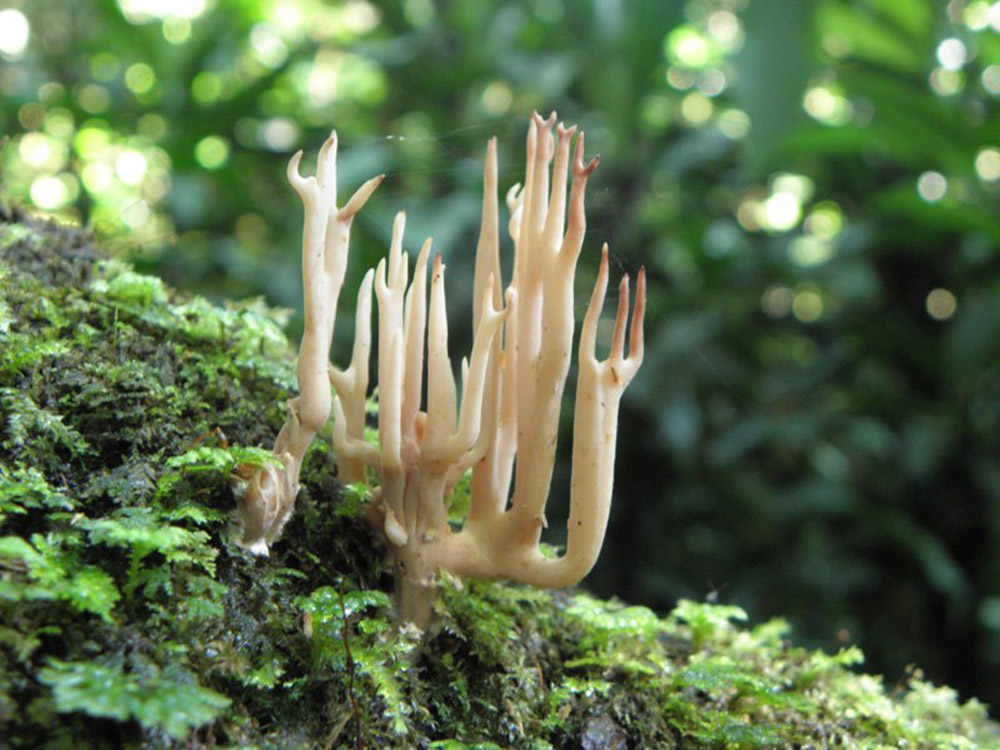 Mukombero’, or white ginger an endemic species widely believed to have aphrodisiac properties
Mukombero’, or white ginger an endemic species widely believed to have aphrodisiac properties
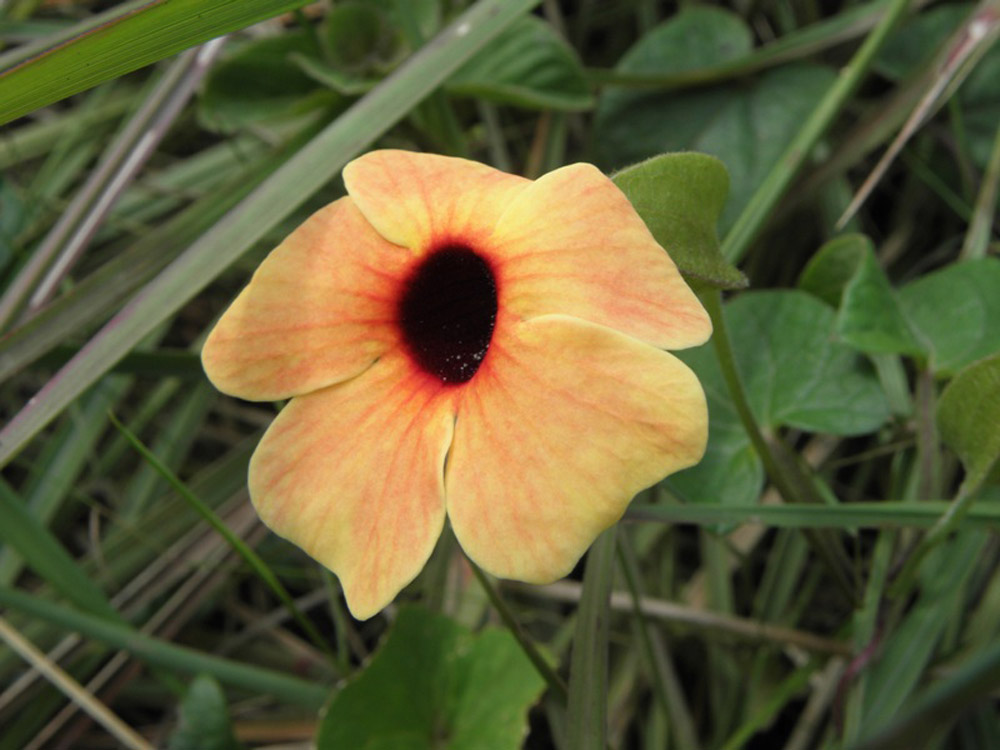 flowering plants including 60 species of orchids with 9 species found only in this forest
flowering plants including 60 species of orchids with 9 species found only in this forest
The sheer abundance of bird-life here is overwhelming. Avian lovers on a Kenya birding safari will relish a trip to the Kakamega Forest. The Forest has over 367 recorded species, nine of which are endemic. The star among these is the great blue turaco, a comically gaudy bird that flops between trees like a colorful turkey. Other avian gems include bar-tailed trogon, black bee-eater; hairy-breasted barbet ,innumerable woodpeckers, greenbuls and the African Grey Parrot.
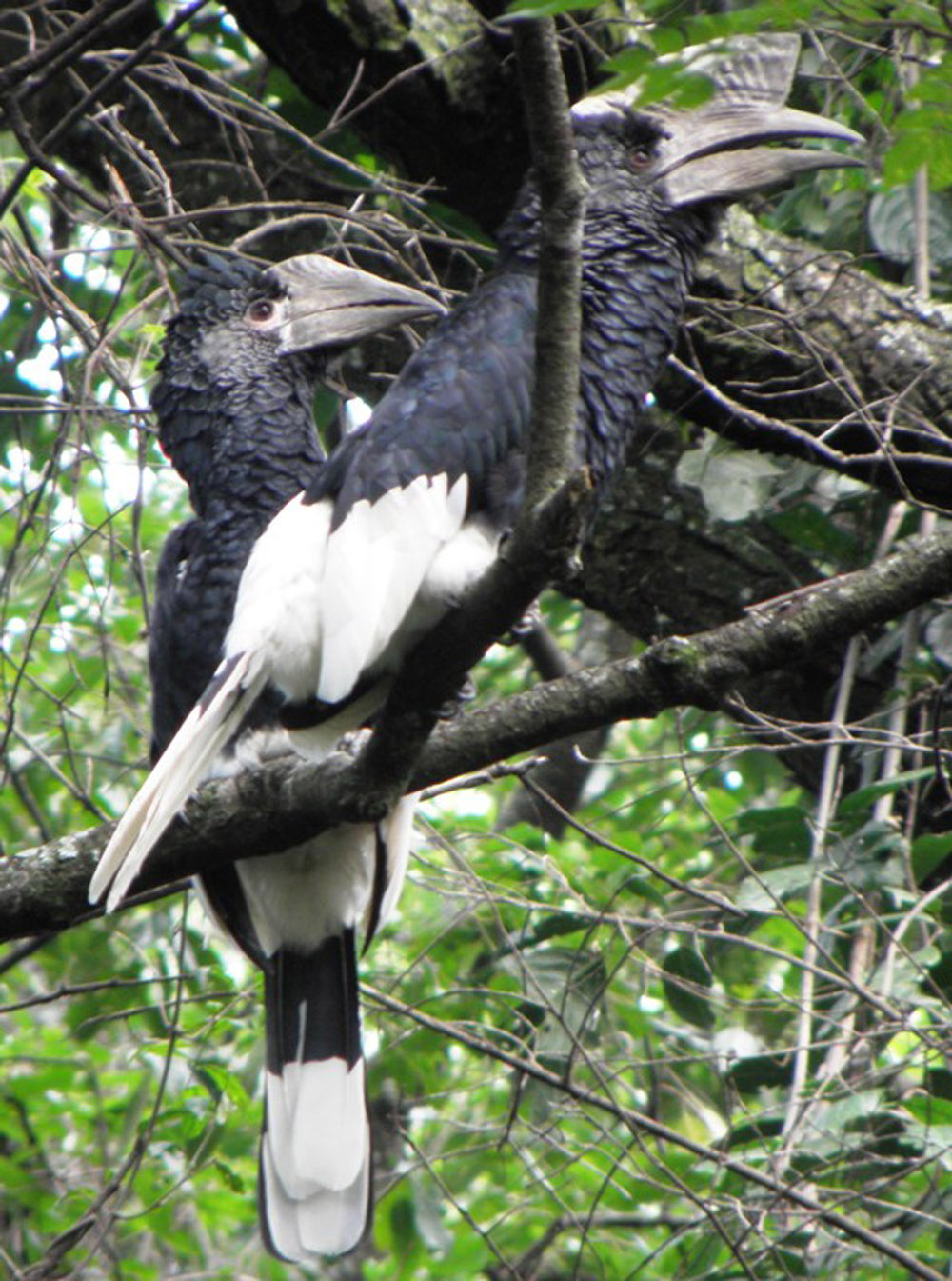 The Black-and-white-casqued Hornbill
The Black-and-white-casqued Hornbill
The forest is home to a variety of Wildlife, such as the hammer-headed fruit bats known to be the largest bats in Africa. They inhabit a cave found in the higher elevations of the forest. The forest canopy is teeming with residents like the 7 varied species of primates including colobus monkey, potto, de brazza’s monkey, blue monkey, olive baboon, red-tailed monkey, white-nosed monkey and also reptiles like chameleons, skinks and other lizards. The forest shrubs conceal smaller faunas like forest hogs, duikers, aardvarks, bushbucks, porcupines, mongoose and also flying squirrels. Among the predators, the forest has small cats like civets, genets and servals.
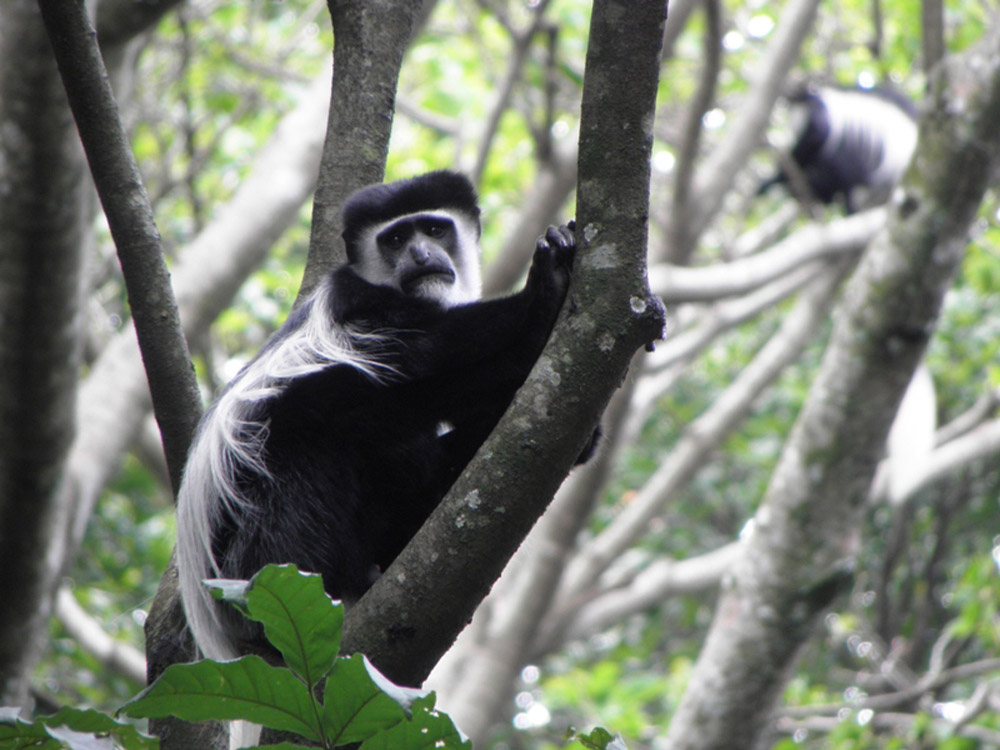 Black and White Colobus monkeys are numerous in the forest
Black and White Colobus monkeys are numerous in the forest
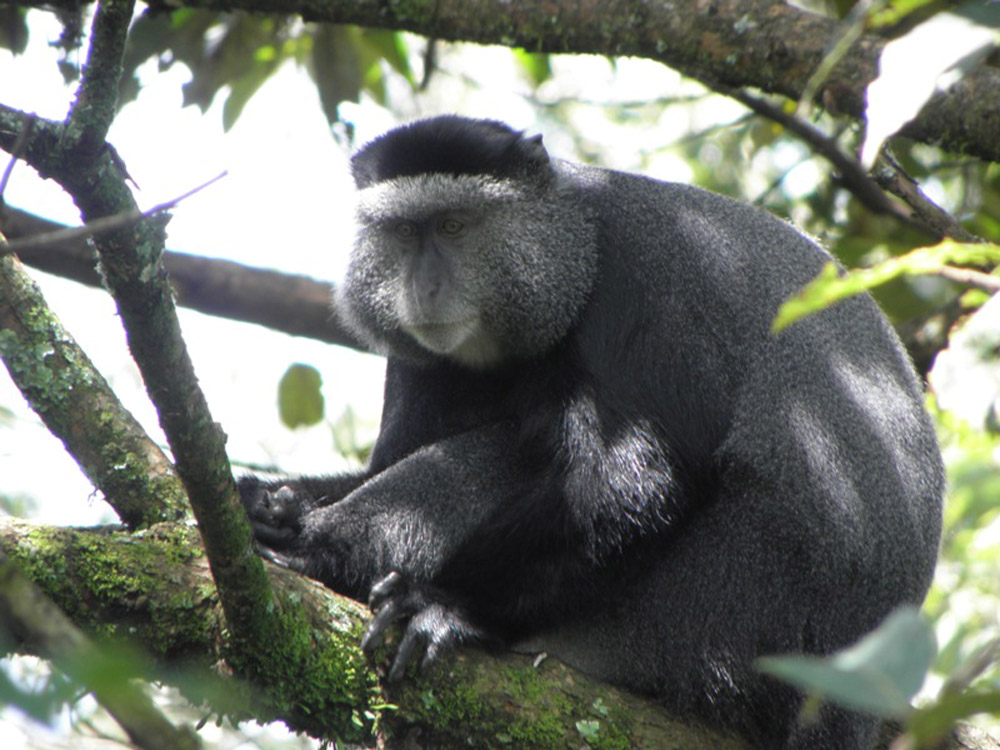 the endangered DeBrazza’s monkey found at the isolated Kisere Forest Reserve
the endangered DeBrazza’s monkey found at the isolated Kisere Forest Reserve
Insects are abundant and some are quite spectacular, such as pink and green Flower Mantis. Particularly well represented groups are ants and beetles. Gastropods, millipedes and spiders are also common. Other insects like the stick insects, fireflies and Goliath beetles have unique characteristics of their own and each is a wonder to look at. The park is notably renown for it’s colorful butterflies; there are over 490 recorded species.
Kakamega is best explored on foot. The forest has many clearly marked walking trails,with each different trail leading you through diverse kinds of terrain, affording opportunities to view birds, butterflies, reptiles and the numerous primates. You can walk around on your own, however it is highly advised that you take the guided tours. There are wonderful (mostly self-taught) guides who will tell you about the plants, animals and the surrounding local community.
Don’t miss the opportunity for an early morning hike in the Lirhanda Hill (the highest point of the forest) the enchanting sight of the forest below covered in a blanket of mist is a moment to savor!
Image Source
In a nutshell Kakamega is very different to the usual game park safari in Kenya, relatively unknown and off the beaten tourist path, it’s not going to tick any of the classic safari boxes, but spending a few days exploring the forest is an absolute delight. You will get to experience a slab of tropical rain forest magic – the outlandish flora, birdsong shrills, buzzing butterflies, scampering primates swinging from canopy to canopy and so much more.
For more information you can visit the KWS website. *All photos in this post unless indicated are courtesy of KWS.
Linked to Our World Tuesday .
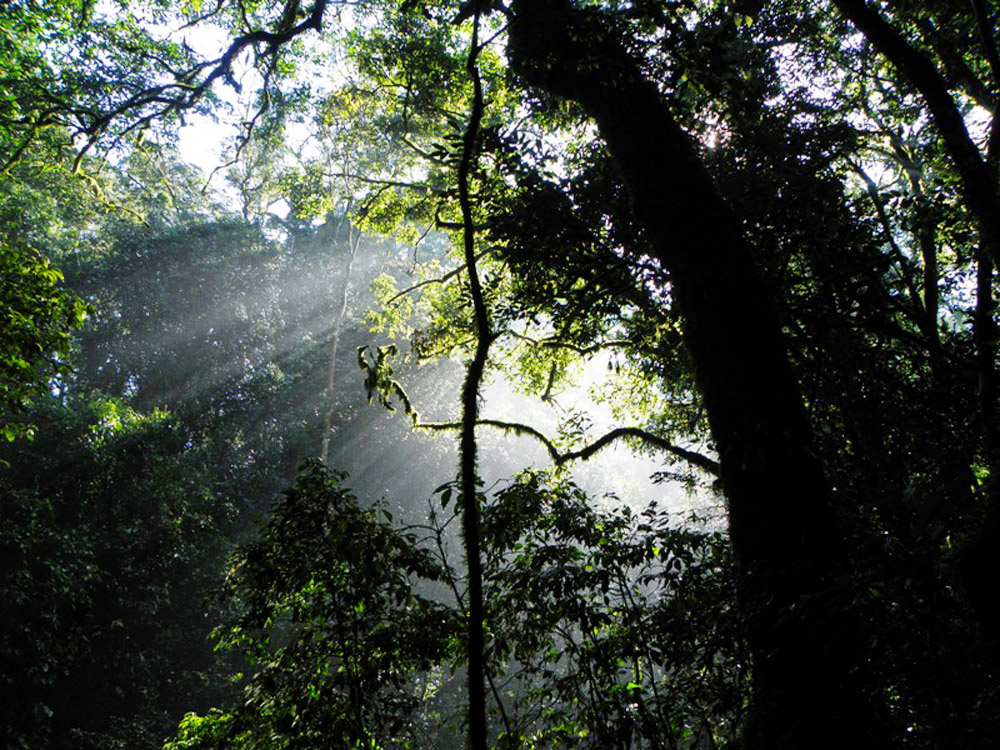
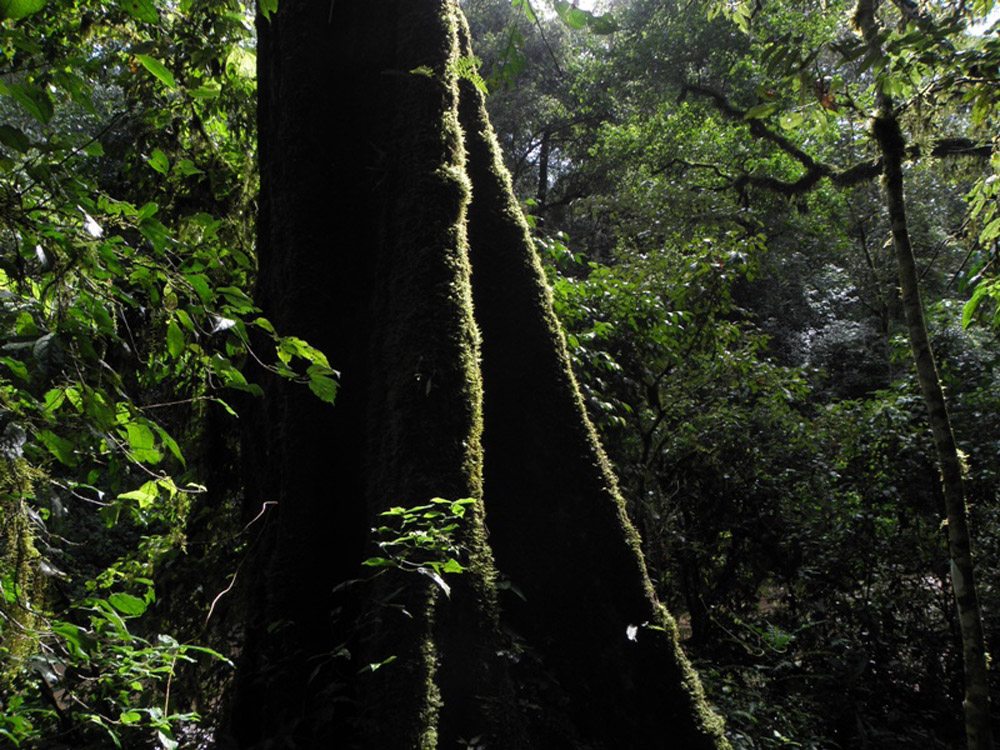
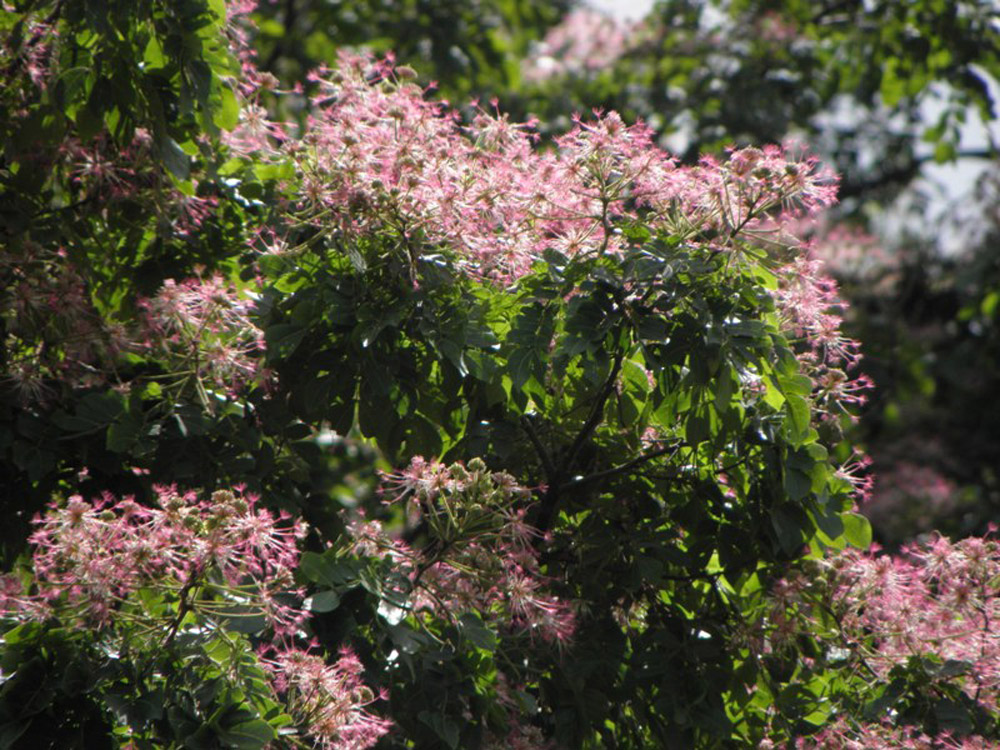
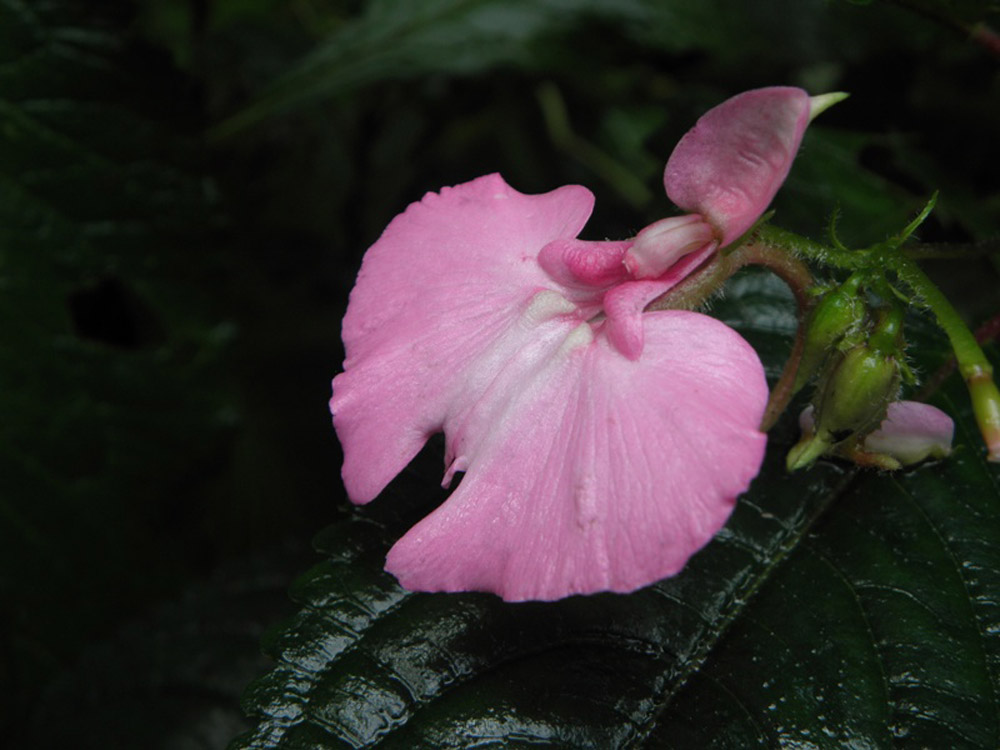
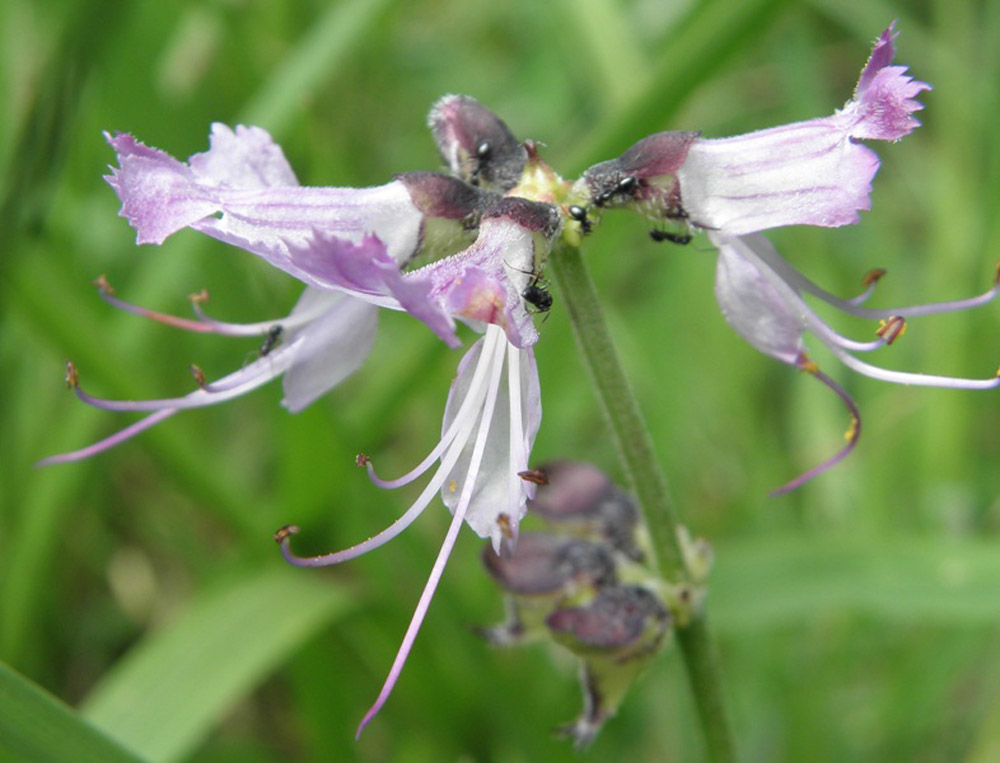
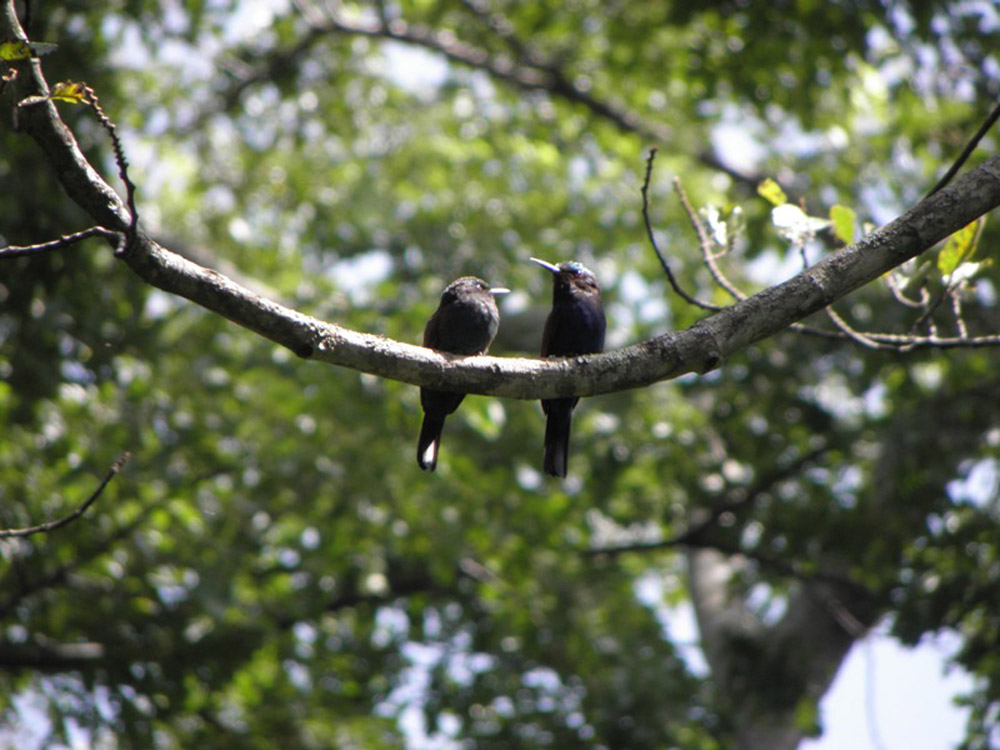
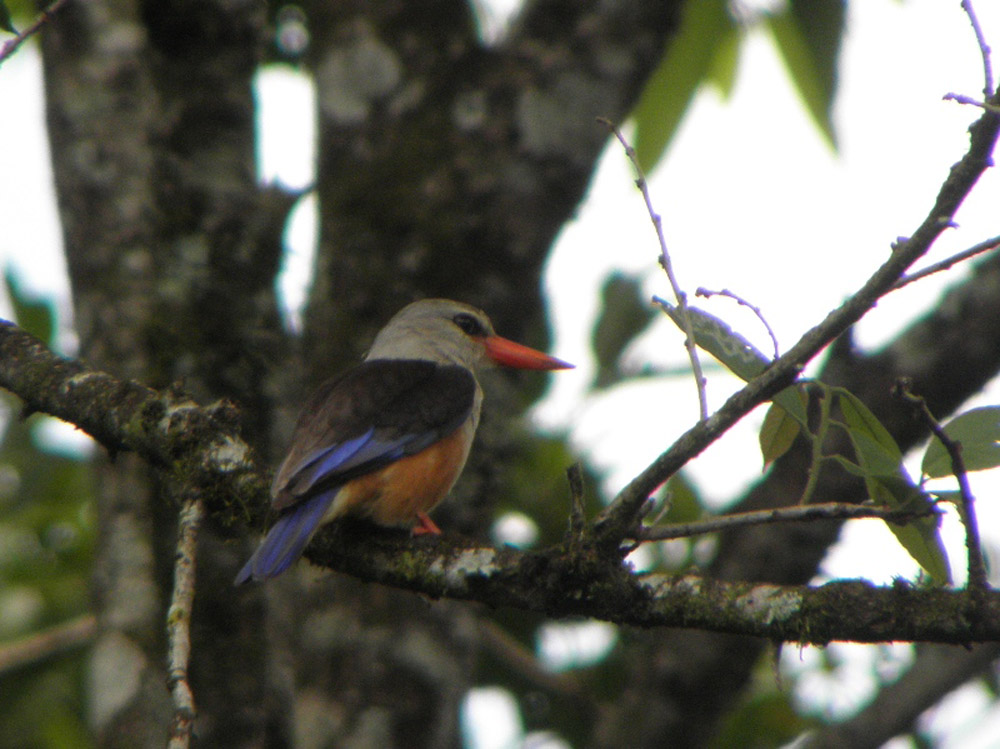
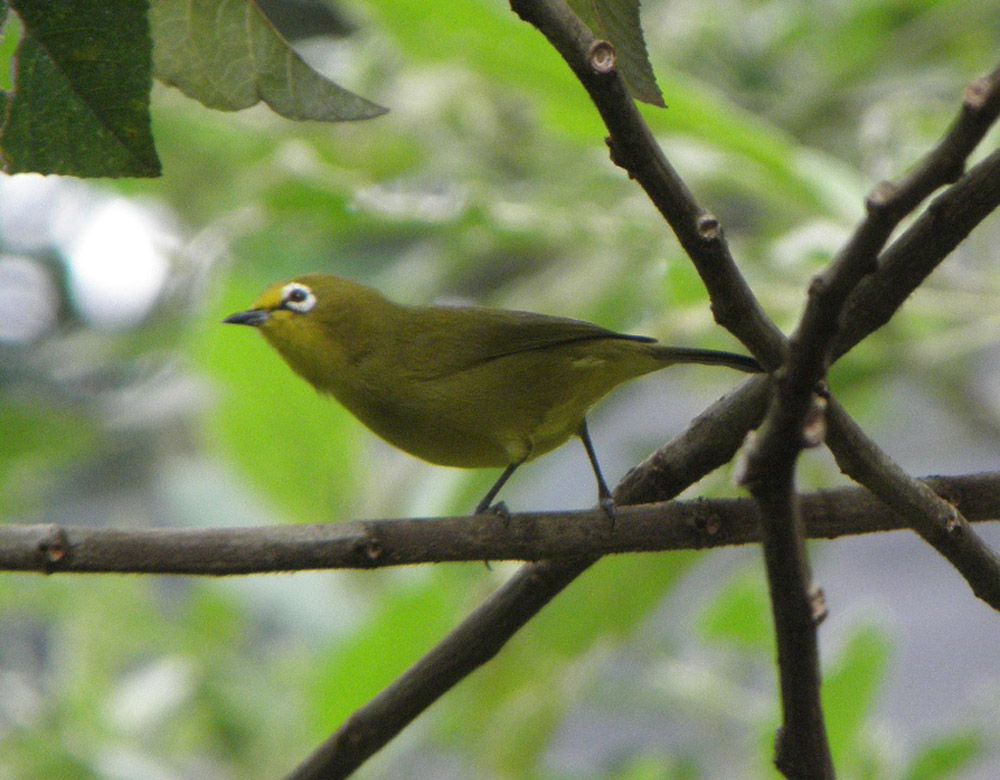
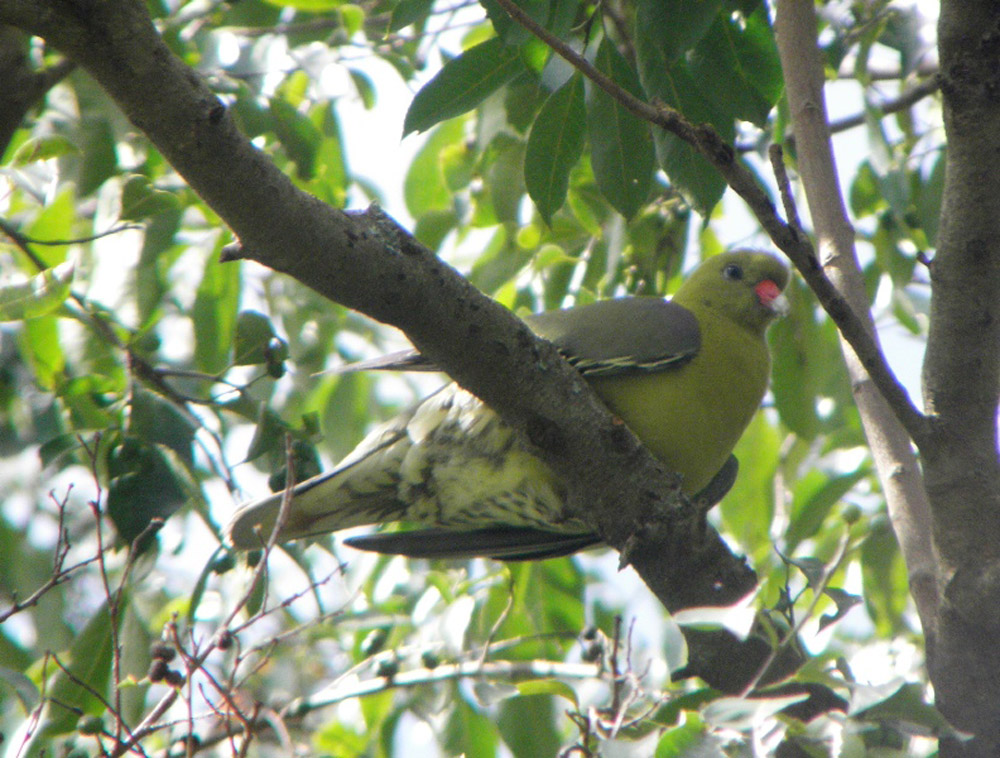
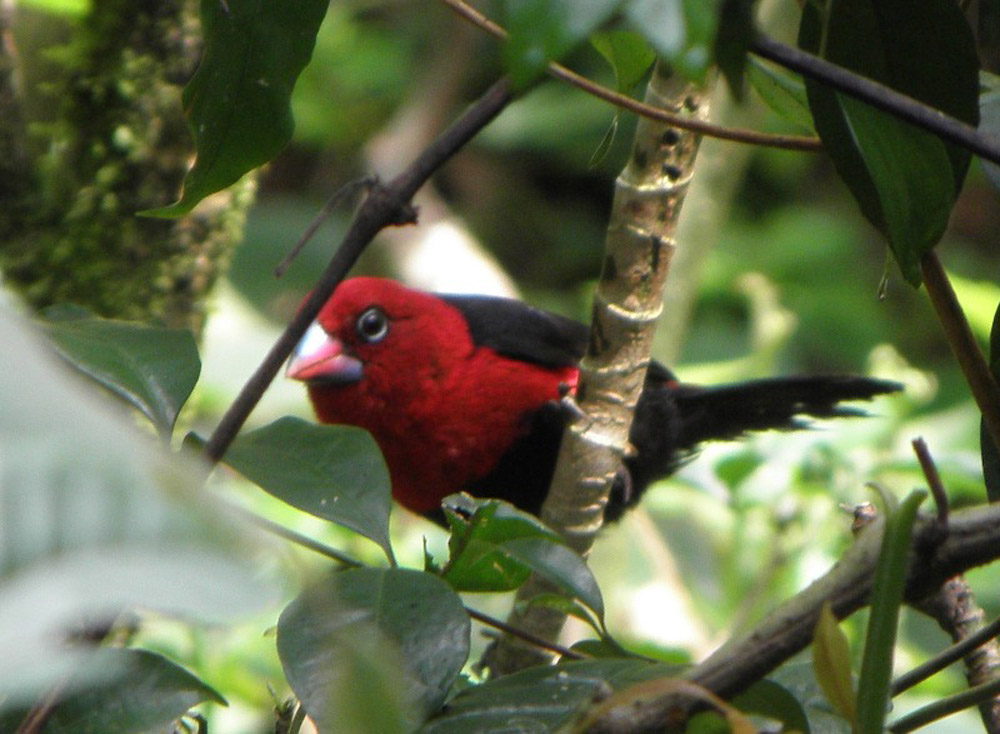
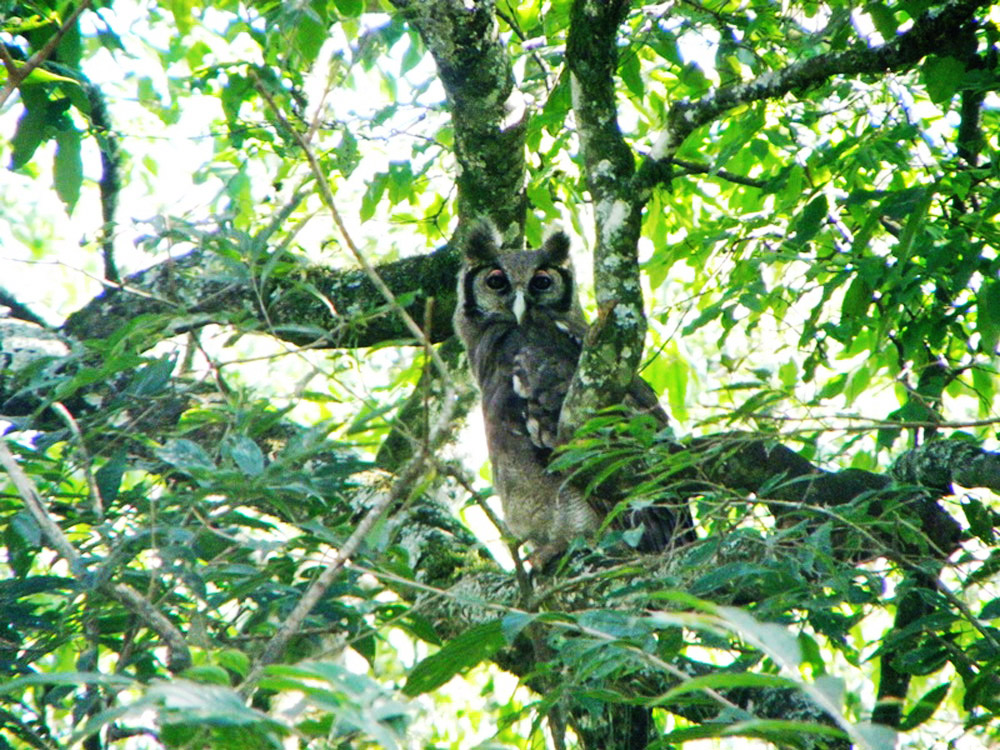
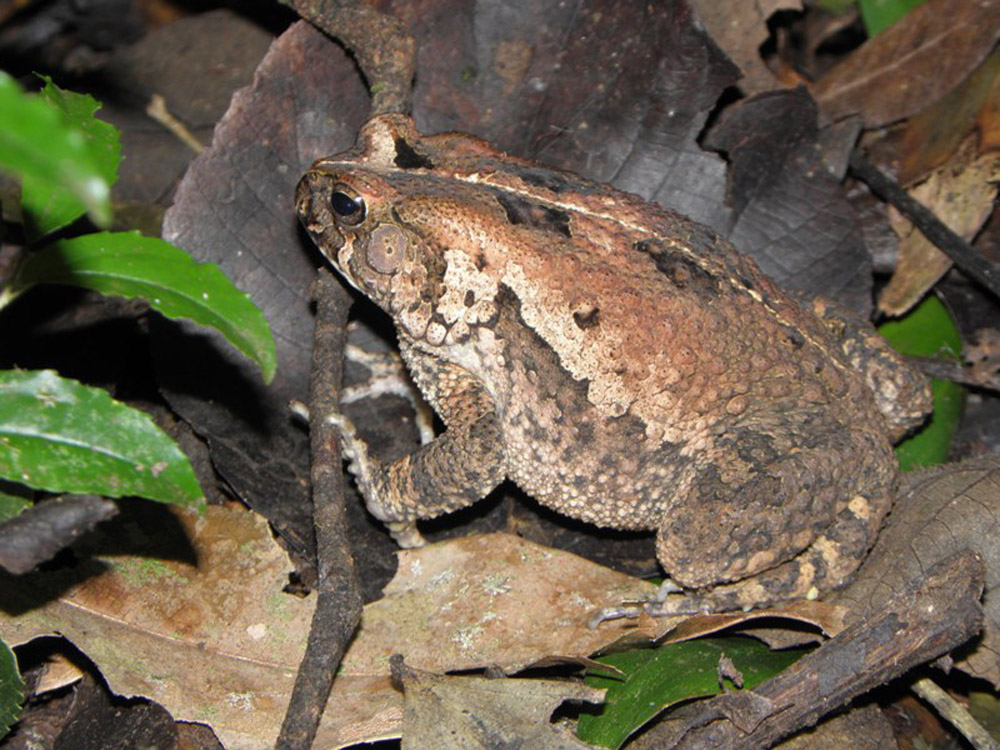
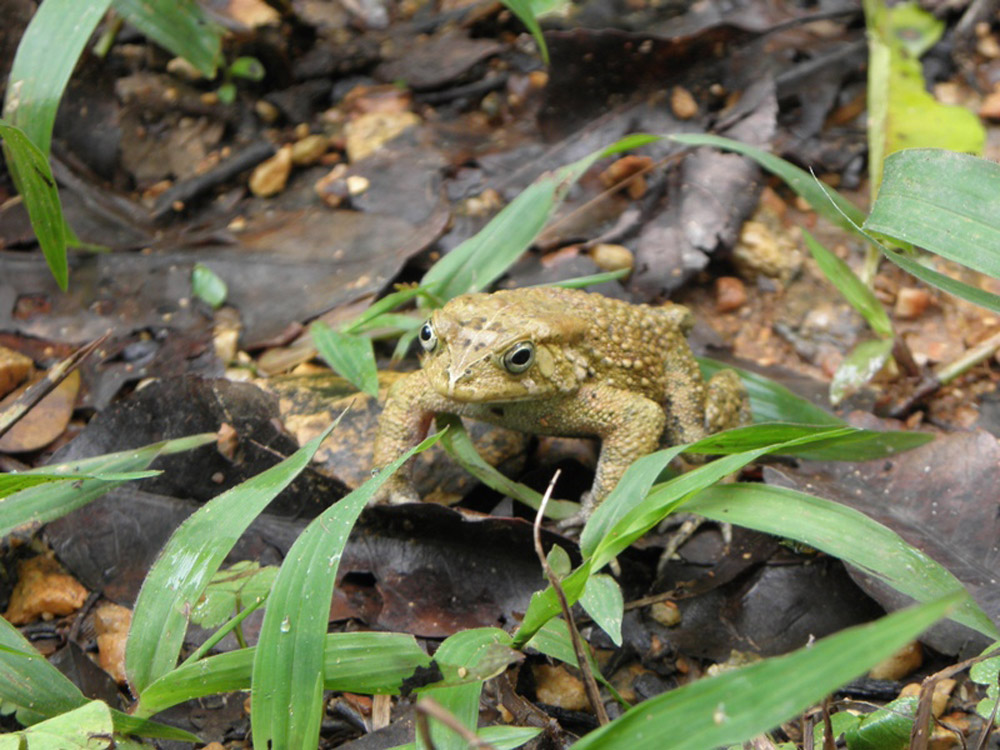
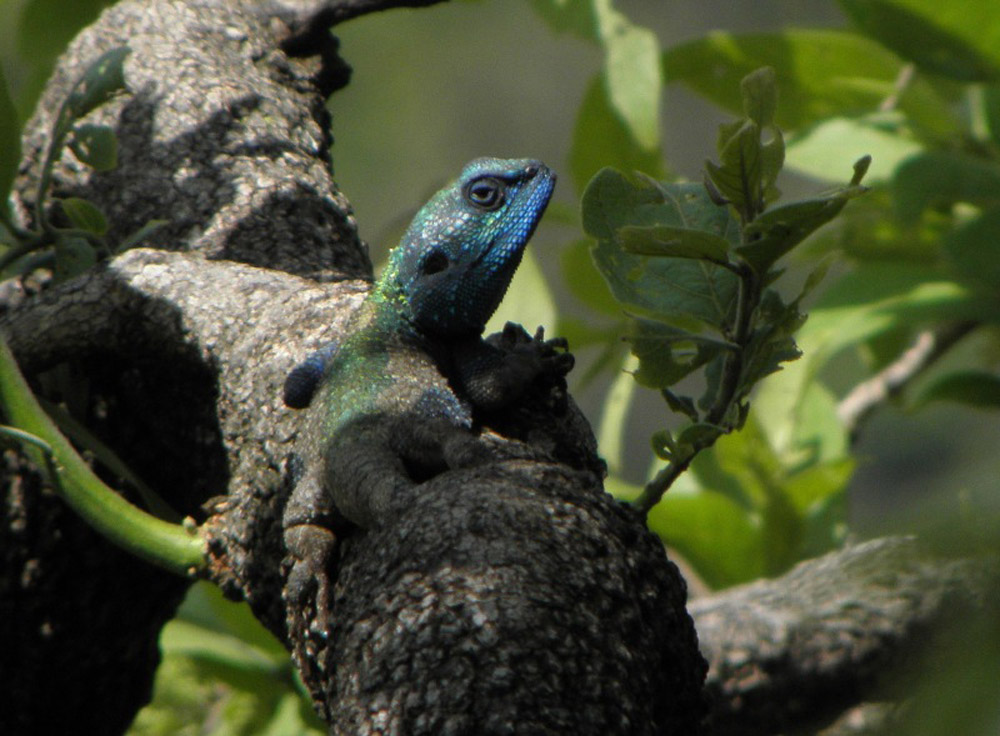

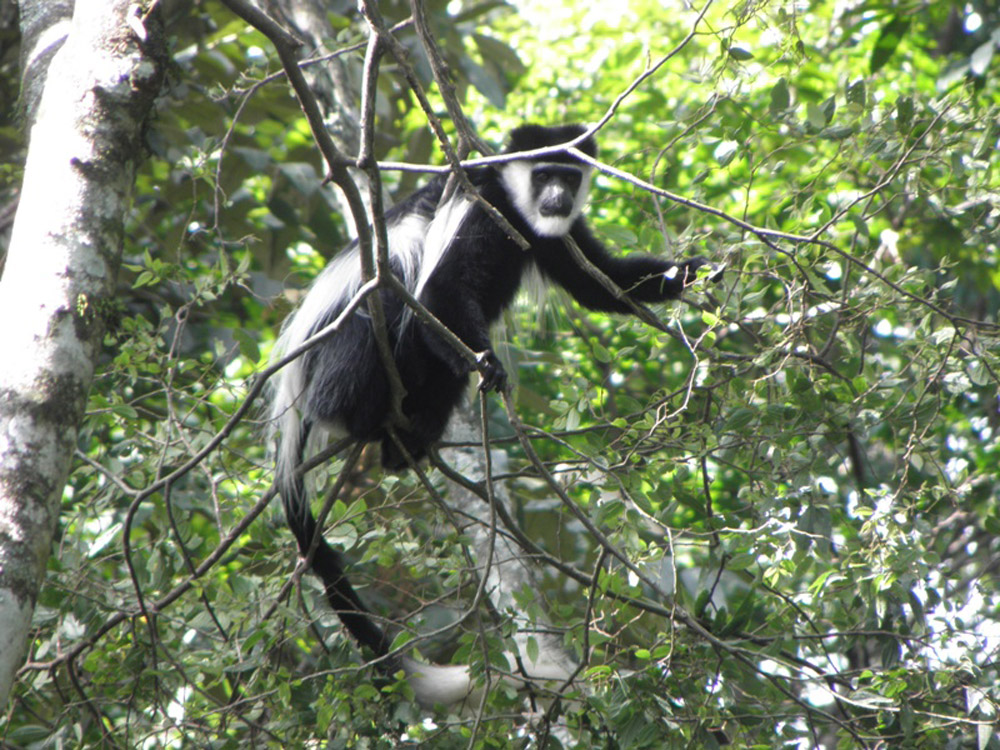
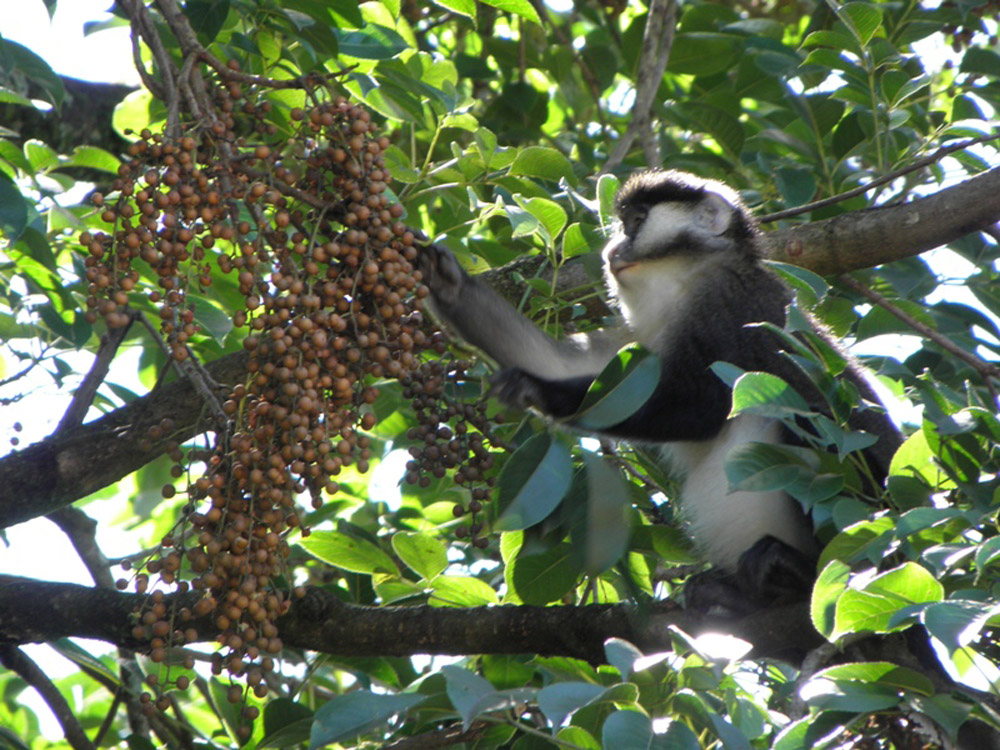


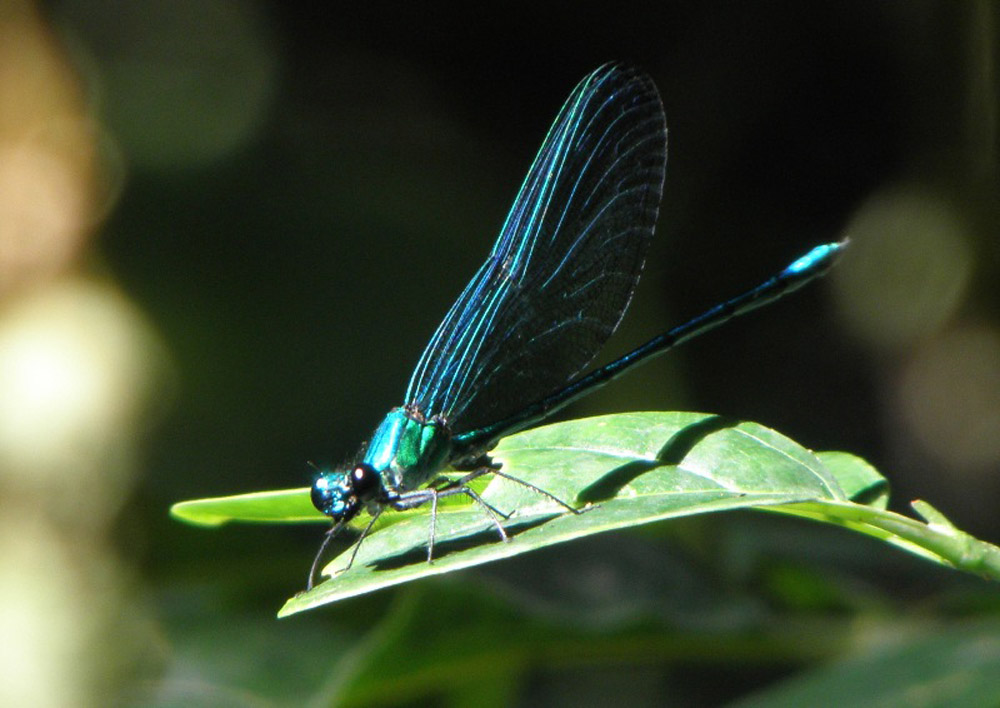
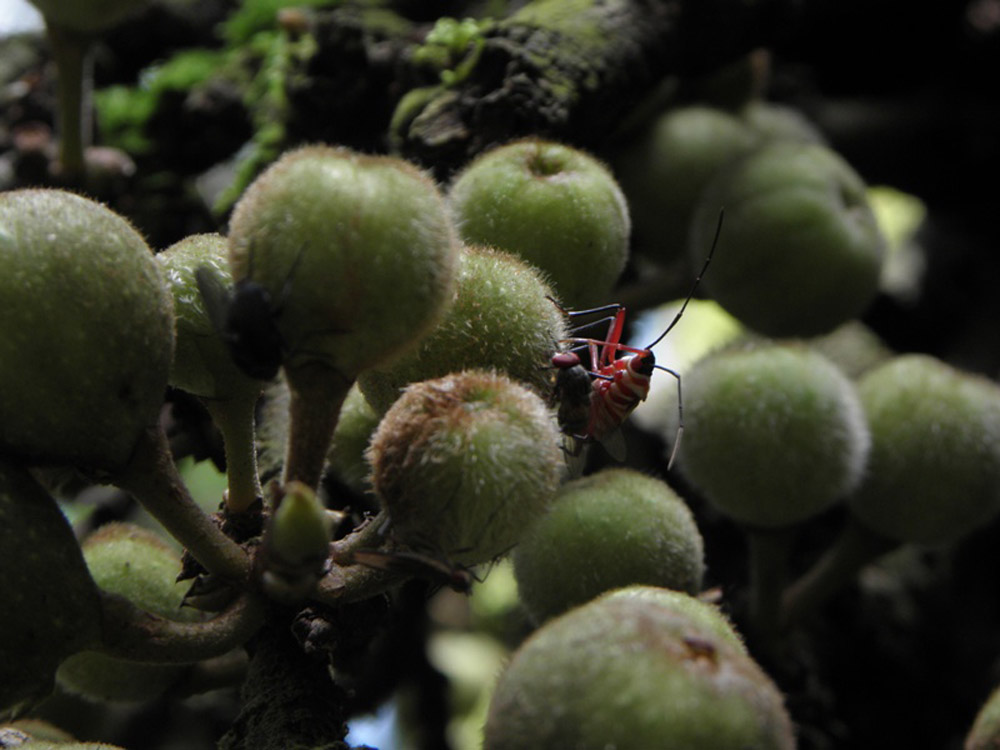
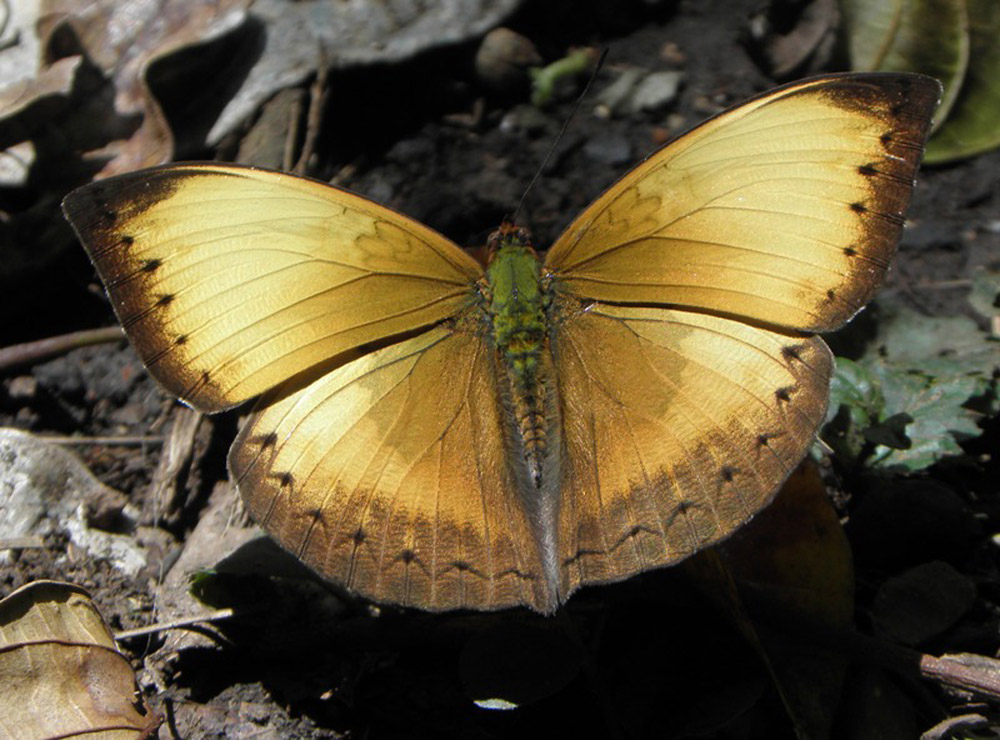
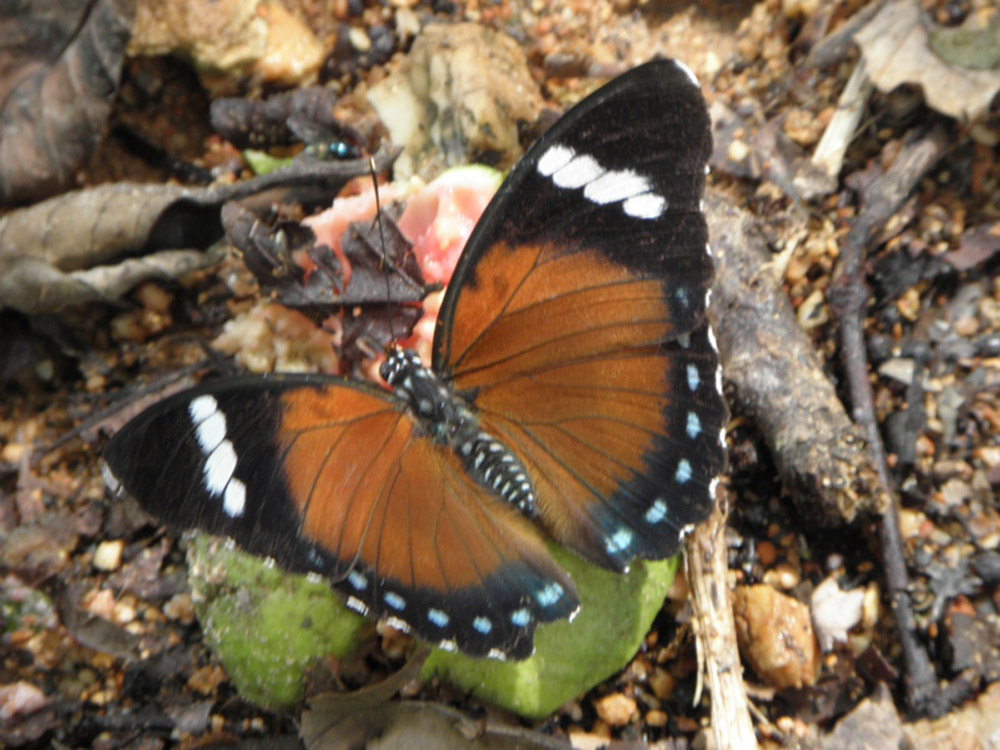
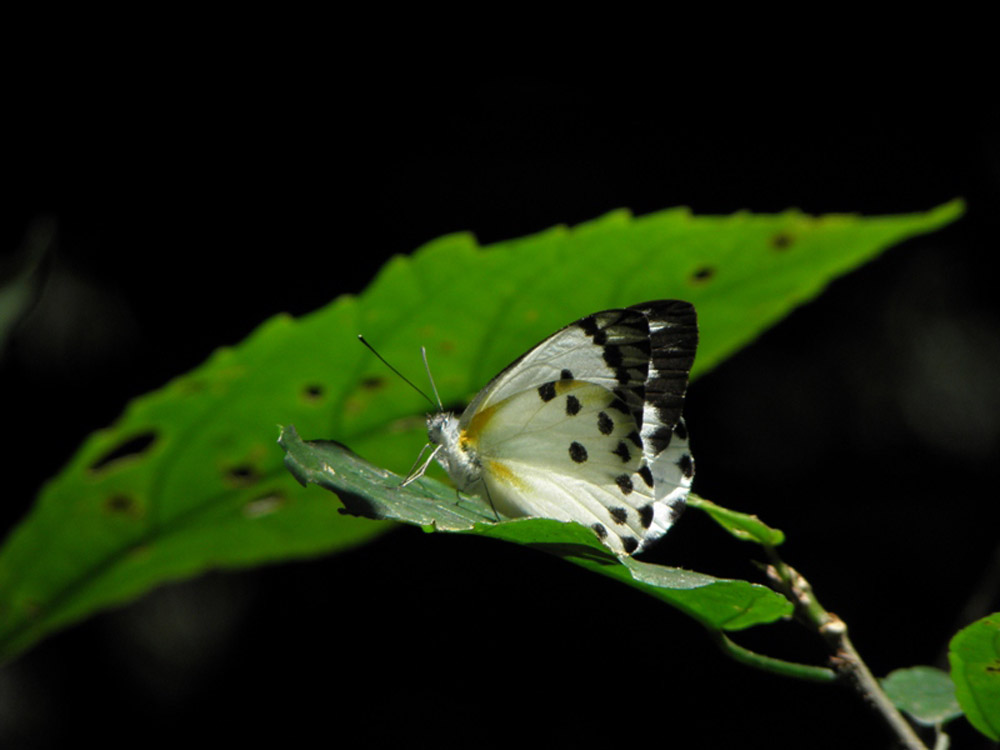
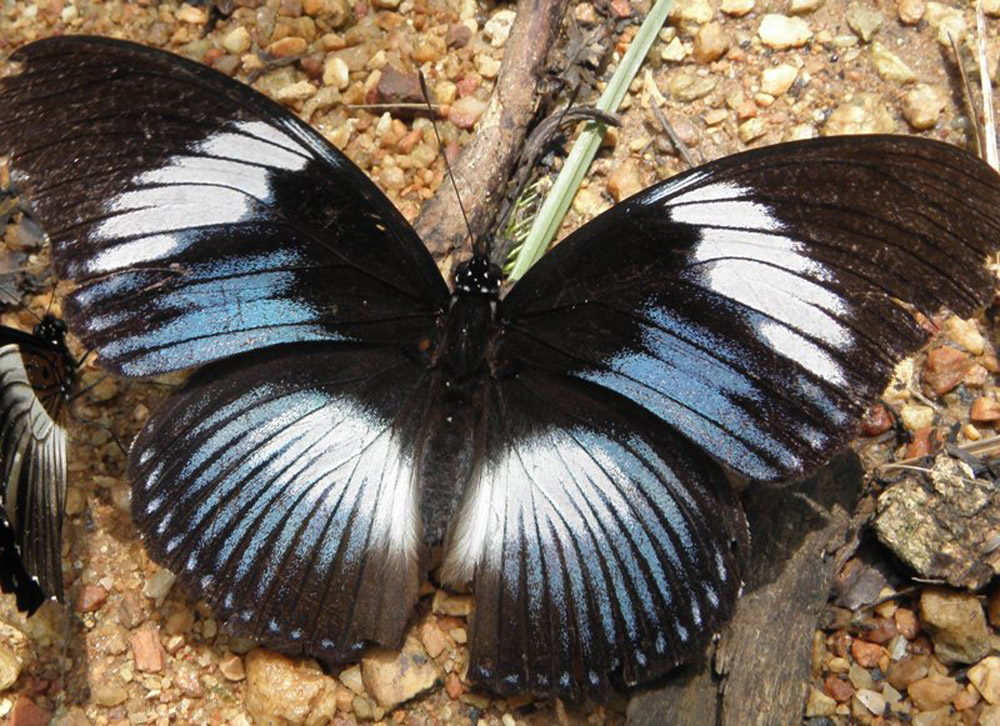
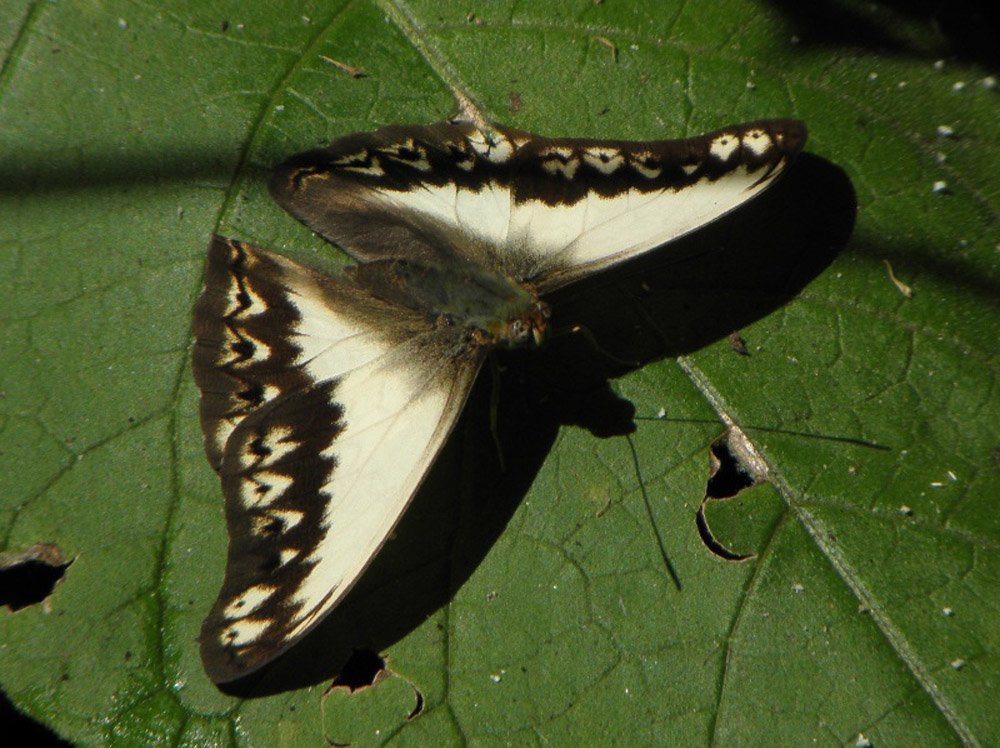
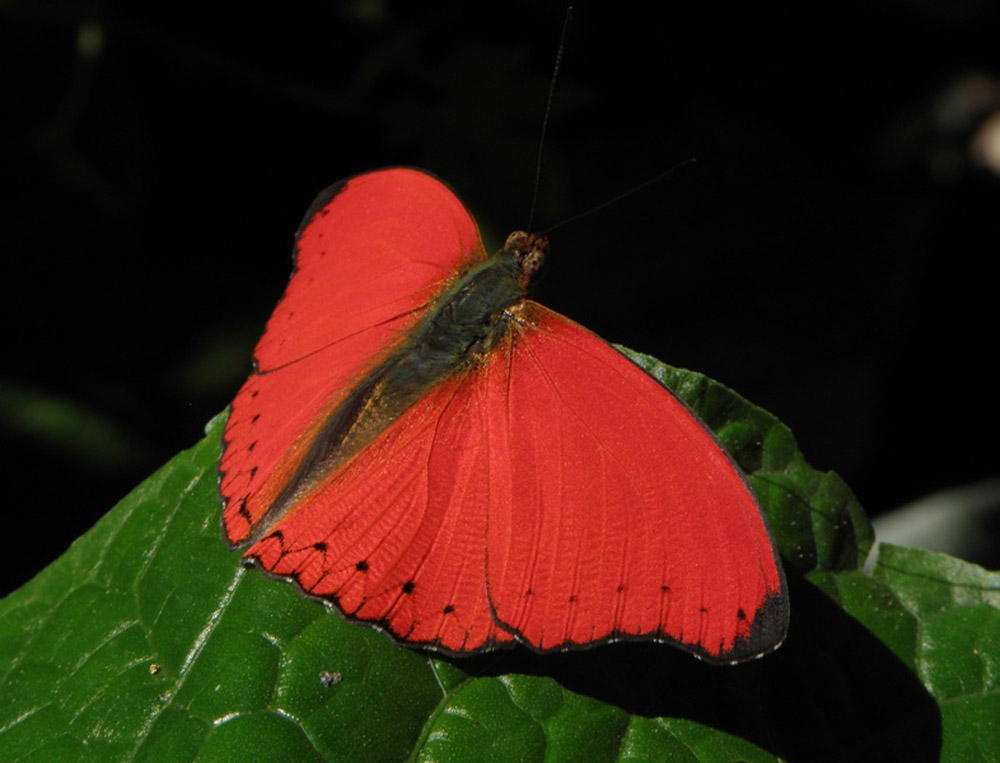
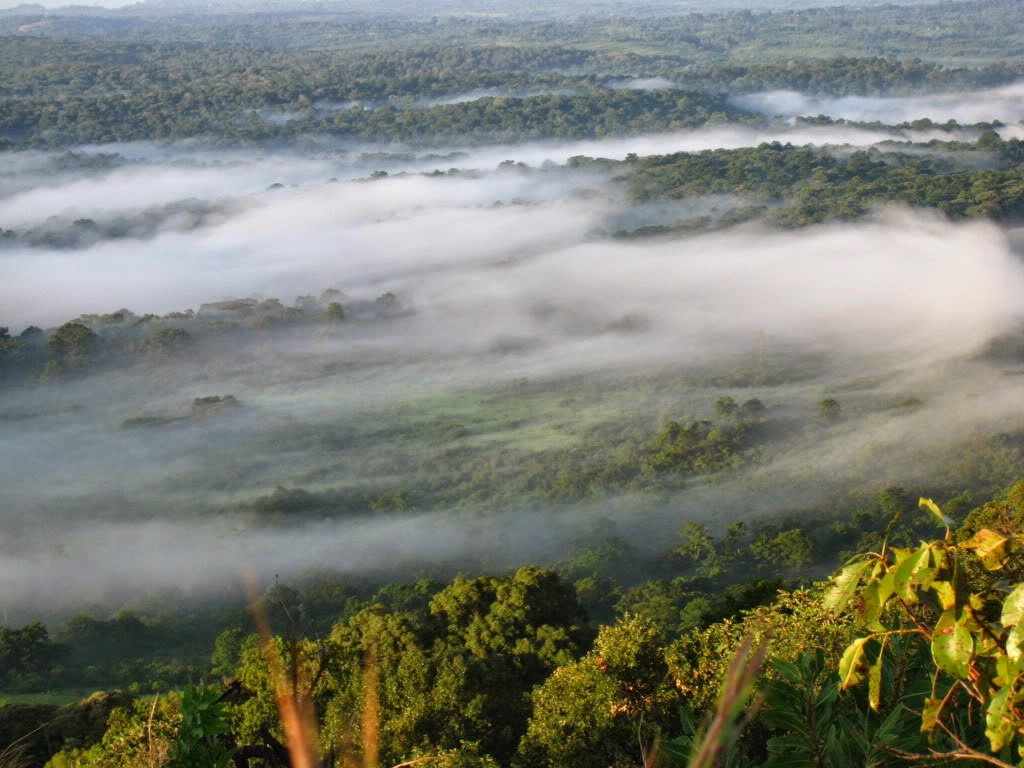



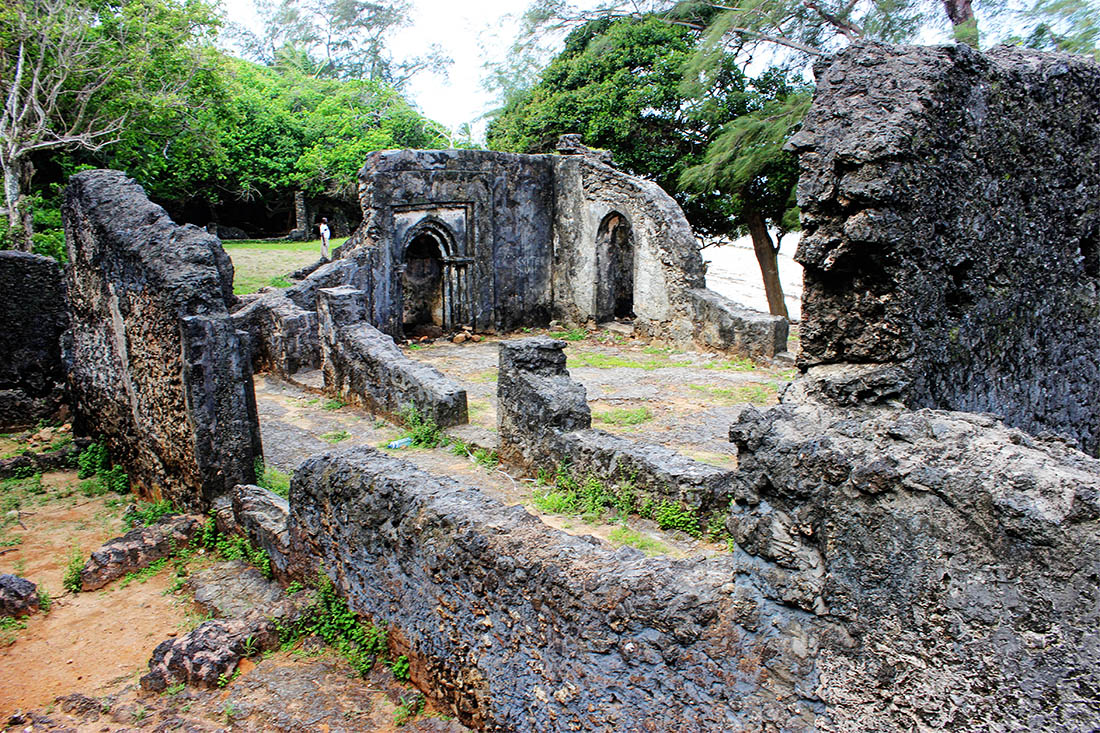
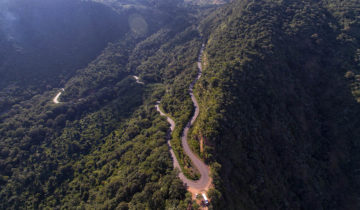
18 Comments
So beautiful…
Gorgeous photos!!!
Oh my! Is this Kenya! I think this country has a lot to offer. I haven’t been in Kakamega Forest and i will be looking forward to.
I am truly blown away by the biodiversity of Kakamega Forest. I love the little birds and trees and all of the plants. My granny has a big garden in a small village in Poland and I always go there to smell some flowers and admire the beauty of summer, but 60 species of orchids is just craziness!
Your photos make me feel I’m actually there, I can almost hear all the forest noises! 🙂 Would love to visit one day.
Wow – these shots are spectacular!
What a stunning place, and such beautiful photos. A place for the wish list, that’s for sure.
Sigh of relief…no spider pics in this post! I scrolled quickly past the insects section just in case. 😉 The beaks on those hornbills are no joke! This forest is beautiful and looks like it would be such a peaceful place to explore.
Looks like an outstanding place to visit – and a bit of a photographer’s dream. Love the bird life.
I agree with what Agness said on the incredible diversity of the forest. I especially enjoyed the pictures of the monkey and that frog looks(?) huge!! 🙂
Absolutely gorgeous photos. These unique wildlife and orchids are so amazing to se. Orchids are my favorite flowers so this was such a treat to see. Every week you keep making me wish so much to visit Africa.
Its been a while since I saw a picture of a horn bill, and the owl glaring at the photographer, did he know it was during the day?
Kakemega Forest has an amazing biodiversity. What a wealth of unique vegetation and wildlife. I love all the flowers and birds and butterflies. I hope to make it here somday. Beautiful photos.
Love your photos. That little monkey is so cute!
These are such beautiful photos. I’d love to explore this forest in person one day. I especially like the pictures of the ginger, the owl and the frogs.
Interesting never seen an hornbill,the first time.beautiful butterflies especially the red one..The photographer amazing job
Wow amazing pics and what an abundance of wildlife! Love the monkeys!
It is really wow !! to visit here . There are several factors that have attributed to the rapid deterioration of various ecosystems. I am always wait to read more about biodiversity . Thanks